House Hunting Tips for Moving Out of State
June 3, 2024
Purchasing a new home that is far away from your current one is a major life decision because it entails a significant financial investment. Having a new home where you can make new friends and start over is also an exciting and adventurous experience. Buying a new home far away from your current location, on the other hand, can be a rather stressful endeavor. It is associated with a great deal of mental and emotional strain. From deciding on the best place to relocate to, to finding the right realtor, buying within your budget, and finally planning your relocation, we’ve got you covered.
Here are a few pointers to help you with your home search.
When buying a new house, you must know how much money you have set aside for the purchase and relocation. You must be able to calculate the true cost of the house as well as the costs that would be incurred. Figure out how much it would cost to buy a new home, hire a real estate agent, hire a relocation specialist to help you move out, homeowner’s insurance, property taxes and utilities, house repairs, transportation, food, and other costs.
If possible, you will need to consider a mortgage loan from a bank or another mortgage institution willing to lend you the money you need to buy the house. However, working within your budget is recommended to stop accumulating debts that could lead to the loss of your home in the long run. If you don’t have the money right away, you might pay in installments. The first step in buying a new home should be to create a budget.
Also Read: Things You Should Know About Your House Down Payment
Before purchasing a home, you can pay a visit to the property to inspect it thoroughly. Even with the aid of a good realtor and a virtual tour, a visit to the house and inspection are needed. It’s typically a good idea to get a sense of how your life will be after you’ve moved into your new home. You can also hire a specialist to inspect the property. A good inspector will look over the whole house and give you professional advice about whether you can buy it or not. This will save you from making the wrong decision and having to live in a house that isn’t your dream home.
Also Read: Hidden Expenses When Purchasing A Home
One of the most important things to do when relocating and purchasing a new home is to find a decent and trustworthy realtor. You should be able to choose a realtor with whom you are comfortable working. Find a realtor with sufficient experience. Someone who is familiar with the housing market and the area in which you will be relocating. You should be able to reach out to the realtor at any time to speak with them.

Often ask for recommendations from other homeowners when choosing a realtor. A referral is valuable because it ensures that you are dealing with the right people. If you don’t know someone in the new area who can recommend a realtor, look for an online forum for that area and connect with people there. You may also study the realtor online or via a real estate firm to see if they are reliable and trustworthy.
As a result of the pandemic, consumers are turning to the internet to find a new home. They can conveniently go to a real estate website with a virtual house search and find an up-to-date listing of houses in the area they want. They can even take a virtual tour of the house they want to buy. This is advantageous because you would not have to drive to inspect the property. If you have a busy schedule, a virtual tour can be beneficial.
Your new house should be large enough to fit your whole family. However, keep in mind that you must always work within your budget. If you are single, a one-bedroom apartment is an option. You can get a two-bedroom apartment if you are newly married. You can also get an apartment that can fit both you and your guests if you are a couple who does not want to have children.
When you have a cat, you should think about a pet home, the school your children will attend, and accessibility features for an elderly person if you have one living with you, as well as other family members. If you are not working remotely, remember the distance between your home and your workplace. And if you work from home, you’ll need a home that can serve as both an office and a home.
Knowing your current city or location will go a long way toward assisting you in making the best decision when relocating to your new home. Visiting the new city and getting to know the area. It is important to relocate to a secure area. Check to see if the area is notorious for illegal activity or any other undesirable behaviors. Also, see if you’ll feel at ease in your new surroundings. It’s best to think about how people can communicate in the new place.
Some cities have a reputation for being people-friendly, laid-back, aggressive, and so on. You must be aware of the environment that best suits your way of life. You can also learn about the transit options available in the new city so that you can prepare your budget accordingly when you relocate. Consider other options, such as hotels, grocery stores, and art galleries.
Also Read: Tips on How to Find The Right Neighborhood
Finally, keep an open mind when making your decision. Flexibility is crucial. Although you may have a general understanding of the type of home and community you want to live in, you may find that there are other choices.
Are you considering relocating to another state? Wowmover will assist you in securely transporting yourself and your belongings to your new location. If you want a free quote for your long-distance move,
Related Articles:






Since there are so many activities involved in the moving process, it necessitates a lot of preparation. Filing your tax returns in both the state you are leaving and your current state of residence is one of the many things you will need to prepare for. When it comes to tax return calculation and filing, location is crucial. As a result, learning how to file tax returns after a long-distance move is important.
In the United States, various forms of taxes are levied at different levels of government. The state income tax is distinct from the federal income tax. Both the federal and state governments levy income taxes. Individuals are taxed on their taxable income, which is described as their net income. State income taxes are imposed directly by the state on income received in the state where you live.
At the state level, there are a number of taxes that can be imposed. Payroll tax and sales tax are two examples. Self-assessment is common for many taxes. This means that each taxpayer determines how much they owe based on the tax rates and deductions that have been established, and then files their tax returns.
Since state-based taxes exist, when you move long distances, you must cease paying such state-based taxes to your old state and begin paying to your new state of residence. Similarly, if you make a long-distance move, you must stop paying state-based taxes in that state and begin filing them in your new state of residence.
It is important to obtain general tax details in your new state of residence while making a long-distance move. You would be able to stop tax evasion as a result of this. Noncompliance with tax laws to neglect are both examples of tax offenses. Tax evasion has a penalty added to it. Except for federal taxes, most of these fines are state-based. As a consequence, fines and their magnitude will be determined by the state’s particular tax law. After a long-distance move, you must conduct due diligence to ensure that you are in compliance with all relevant laws.
Taxpayers calculate and file their own taxes. As a result, following a long-distance relocation, you’ll need to understand the proper filing mode and method in your new state of residence to ensure that you file correctly and prevent any tax penalties. Moving was stressful for you, as it was for many others. As a result, we’ve compiled a list of items to keep an eye out for while filing taxes in a new state. This list will assist you in preparing your tax return following a long-distance move.
When you make a long-distance move and sell your home, the state requires you to pay an Exit Tax. The Exit Tax is 2% of the gross selling price of property by people leaving the territory. Whether or not there were Capital Gains on the land, the exit tax must be paid.
Also Read: Should I Sell Everything Before I Move?
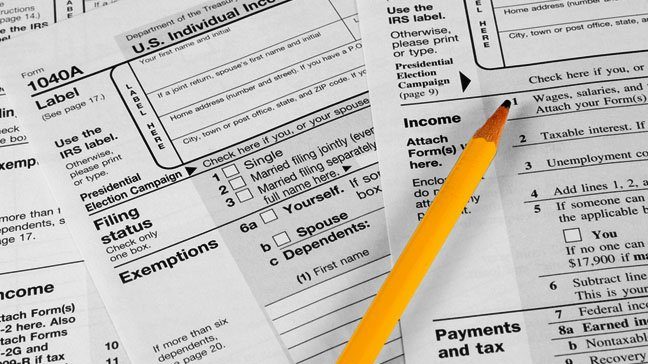
When you arrive in your new state of residence, it is important that you familiarize yourself with the state’s tax laws. Aside from federal tax laws, each state has its own set of rules. Awareness of the relevant tax law will direct you and assist you in preventing tax evasion.
Tax authorities are in charge of administering taxes. Per state has its own tax collector. You can also locate the relevant state authority.
Since states have the authority to create their own tax laws, tax rates vary from one state to the next. The tax rate is set by each state. As a result, when you move to a new state, you will need to determine the new state’s tax rate. Residents in some jurisdictions are not taxed on their earnings. You may be shocked to learn that your new home state does not have an income tax. As a result, you can save money. Other states rely heavily on taxation to fund their budgets, resulting in high tax rates. Others have a single tax rate.
As a consequence, it’s important to learn about the tax rates in your new state of residence. This type of knowledge is widely accessible. You may, however, work with a tax accountant to obtain the most up-to-date tax details available in the state.
Also Read : Moving To A New State Can Lower Down Your Energy Bill
Many state taxes are self-assessed, as previously mentioned. Taxpayers are the ones who assess and file tax returns. The tax authorities would then review it and make any required changes to the tax returns. If you’re married, you have the option of calculating your taxes jointly with your partner and filing jointly. You will register as the head of a household if you are not married but have dependents in your household.
There are a variety of tax deductions available, especially for income tax. These deductions, however, are subject to certain restrictions, and the amount of deductions available is determined by state tax laws. As a result, after you’ve completed your long-distance move, you’ll need to research the allowable deductions and rates in your new state of residence. To stop tax evasion, you can do this before filing.
You can file your tax returns electronically using a variety of platforms. Physically filing tax returns is also an option. The use of electronic filing of tax returns is now widely used, and the IRS encourages it. Even software programs for calculating tax returns for taxpayers are available. When you arrive in your new state of residence, it’s vital to learn about the filing options available. After you’ve decided on a filing mode from the options, you’ll need to register.
Are you considering moving to Florida, or another state? WowMover will assist you in safely transporting yourself and your belongings to your new location. If you want a free moving quote for your long-distance move, Call us today at tel:(833) 617-2307
Related Articles:






If you’re looking to save time and energy on your next move, we can suggest qualified national moving companies near you that can help. Moving can be a stressful and time-consuming experience, especially when you’re moving to another state.
That’s why many people choose to hire a national moving company to help them with the process. However, with so many options out there, it can be overwhelming to choose the right company for your needs.
National moving companies are professional movers that provide long-distance moving services across the United States. They offer a range of services, from packing and loading to transportation and unloading. Some companies also offer additional services, such as storage and cleaning. National moving companies typically have the experience and equipment necessary to handle large, complex moves that require coordination and planning, giving you relief in the process.
There are many benefits to hiring a national moving company for your move. Here are just a few:
Moving can be a time-consuming and stressful process, but a national moving company can take care of many of the tasks for you. They can handle packing, loading, transportation, and unloading, leaving you more time to focus on other aspects of your move.
National moving companies have experience with long-distance moves and can anticipate and address potential issues that may arise. They also have the equipment and resources necessary to handle large and heavy items, such as pianos and appliances.
When you hire a national moving company, you can have confidence that your belongings will arrive at your new home on time and in good condition. Most companies offer insurance to protect your belongings during the move.
This could help you: How To Choose The Right Moving Container Companies?
Choosing the right national moving company is an important decision that can affect the success of your move. Here are some factors to consider when making your choice:
Look for a company with a strong reputation for quality and reliability. You can check online reviews and ratings, as well as ask for referrals from friends and family.
Make sure the company you choose is licensed and insured. You can check the Federal Motor Carrier Safety Administration (FMCSA) website to see if a company is registered.
Consider the services you need and make sure the company offers them. Some companies offer packing, loading, unloading, and transportation, while others may offer additional services like storage and cleaning.
Get free quotes from several different companies and compare them. Make sure to get a detailed estimate that includes all costs associated with the move.
When you hire a national moving company, here are some things you can expect during the moving process:
Before your move, a representative from the moving company will likely conduct a pre-move survey to assess your belongings and provide you with a detailed estimate. This will help you plan and budget for your move.
On the day of your move, the moving team will arrive to pack and load your belongings onto the moving truck. They will use specialized equipment to handle large and heavy items and will take care to protect your belongings during the loading process.
Once your belongings are loaded onto the truck, they will be transported to your new home. You can expect updates from the moving company throughout the transportation process.
When your belongings arrive at your new home, the moving team will unload them and place them in the designated rooms. Usually, these national moving companies may offer unpacking services as well.

Also Read: Reasons Why You Should Hire The Best Interstate Moving Services
The cost of hiring a national moving company can vary depending on a number of factors, including the distance of your move, the number of belongings you have, and the services you require. On average, you can expect to pay anywhere from $2,000 to $5,000 for a long-distance move. However, it’s important to get free quotes from several different companies to compare prices and services.
If you’re looking to save money on your national move, here are some tips to consider:
Before you start packing, take the time to declutter and get rid of any items you no longer need or want. This will reduce the amount of belongings you have to move, which can save you money.
While most moving companies offer packing services, you can save money by packing your own boxes. Just be sure to pack them carefully to prevent damage during the move.
Moving during the off-season, typically between September and May, can save you money as prices are generally lower.
Before your move, there are several things you should do to prepare:
Make a list and make a plan of all the tasks you need to complete before your move, such as packing, canceling utilities, and forwarding your mail.
Contact your utility companies and other service providers, such as cable and internet, to let them know you’re moving and arrange to have your services transferred or canceled.
Take the time to pack your belongings carefully to prevent damage during the move. Label your boxes clearly, and make an inventory of your belongings.
Moving to a new home can be a major life event that involves a lot of planning and organization. From packing up your belongings to finding a new place to live, there are many things to consider. One of the most important decisions you’ll make might be to hire a national moving company to help with your move to save you time and effort in the process.

When you think about moving to Florida, what images come to mind? What could be better than endless sunshine and miles of white-sand beaches? What about Miami’s nightlife?
While you may be thinking about having a good time, keep in mind that new residents to Florida may want to know what they’re getting into before moving. Florida’s laws, it turns out, set it apart from the rest of the country.
Here’s a list of some of the things that you can’t bring into Florida.
Almost anything is legal if you have a Florida Concealed Weapons and Firearms License (CWFL). The following are some of the more prevalent weapons that Florida allows:
Carry is still prohibited in a number of areas, including government buildings, schools, and polling stations.
In Florida, no license is necessary for:
Please note that only handguns are covered uniformly across the state. Local laws on all other firearms may differ, so double-check. Also, except in a few limited circumstances, open carry is prohibited in Florida. While it is lawful to own and keep a firearm or weapon in your home, a private property owner has the option of prohibiting weapons on their property.
A knowing violation can result in an armed trespass crime, so double-check before learning the hard way.
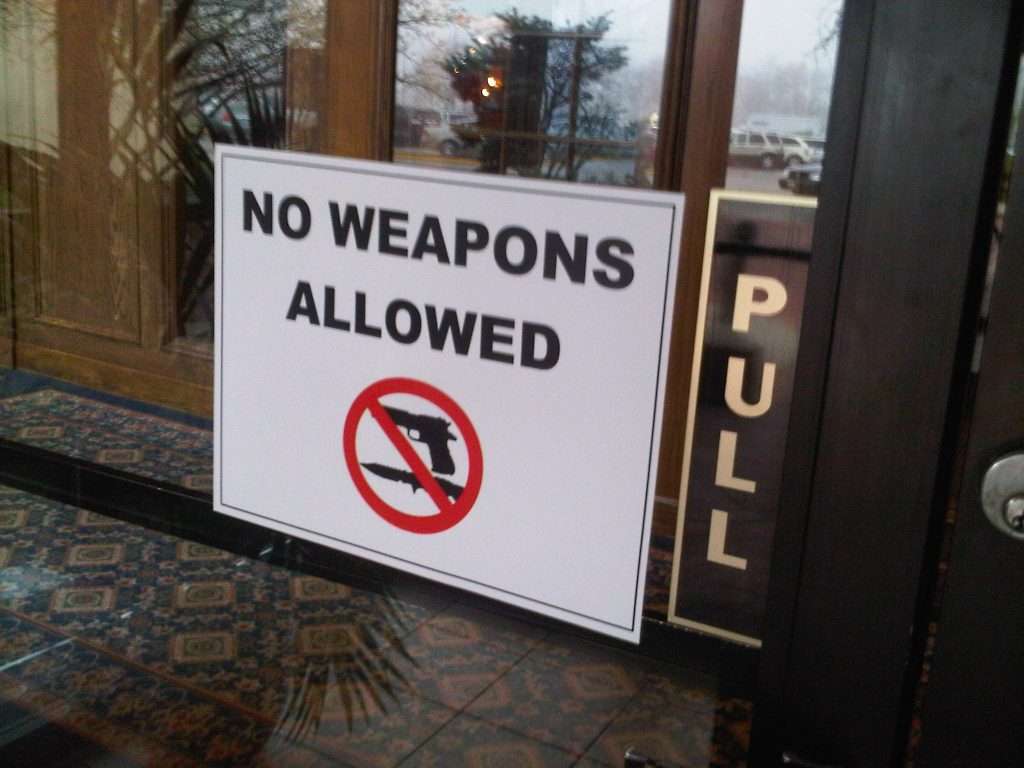
Florida may not have a reputation for being a gun-toting, wild-west state, but that doesn’t mean it isn’t trying.
Despite the fact that Florida is not a “open-carry” state, it is entirely lawful to carry a pistol into the state without a license. You can’t just leave it out in the open where it’ll be easily accessible. However, you can keep it in an unlocked glove compartment or in a box with a lid. There are some limitations, such as the need that you be at least 18 years old.
Recreational marijuana use is still banned in Florida as of this writing. Possession penalties range from four-digit fines to one to five years in prison. In Florida, it is also illegal to grow marijuana at home. Some Florida senators are currently lobbying for recreational marijuana legalization, while no legislation is expected before 2022.
The following are the primary plants that you are not allowed to import into Florida:
There are also other pests and types of agriculture to avoid, as detailed on the Florida Department of Agriculture’s website.
The citrus fruit industry in Florida is enormous. The peninsula is home to 59 percent of the country’s grapefruit groves, 70 percent of the country’s orange groves, and 57 percent of all citrus-growing acres in the United States. It’s no surprise, then, that the state maintains a network of agriculture inspection stations — twenty-three in total – where officials work 24/7 to prevent plant pests and diseases from invading and ruining their crops.
These checkpoints can be found at the Georgia-Florida border and on roadways heading from the panhandle to the peninsula. If you’re driving a rental truck, you must stop for inspection by law. You are not compelled to stop if you are driving your own vehicle.
No problem if you happen to have a tangerine in your car! Fruits from citrus trees can be brought into Florida. It is forbidden to bring into Florida any and all kinds of citrus trees and portions thereof unless a special permit from the Division Director. Furthermore, without a permit from the Florida Department of Environmental Protection, no non-native aquatic plants or seeds may be transported into the state .
Your Ficus tree does not get a pass, whereas your tangerine does. Household plants must be accompanied by a certificate of inspection while entering Florida. If your home state does not give such certification, the state requires that you supply the DEP with a Florida location where the plants will be kept. If required, the department will use this information to conduct a follow-up inspection. So long as you and your Ficus provide Officer Friendly with the information he or she requires, you and your Ficus should be able to continue driving down the highway together.
Check this page of the FDACS website to make sure what you’re carrying is legal.

Most conventionally domesticated animals can be brought into Florida, however they must be inspected during the first month. Within thirty days of bringing your dog, cat, or bird into the state, you should have a certificate of veterinary inspection.
If you own a cat, you have it easy in Florida—at least in terms of the few restrictions that govern cat ownership. Rather than going to the state, find out what regulations apply to your feline companion in your local town.
You may find it beneficial to know that you can keep non-venomous, non-threatened snakes, reptiles, and amphibians on the more exotic side.
Exotic animals like gorillas, snow leopards, and Komodo dragons are prohibited (at least without formal authorization). Read the Florida Fish and Wildlife Conservation Commission’s statement.
Related Articles:






Moving out of state can be an exciting experience. We help you find cheap out-of-state movers near you with your ZIP code. From finding a new home to packing your belongings, there are many things to consider when relocating. One of the most important decisions you’ll need to make is choosing a reliable and affordable out-of-state moving company. In this article, we’ll guide you through the process of finding cheap out-of-state movers near you.
Out-of-state movers are companies that specialize in moving people and their belongings from one state to another. These companies typically have the necessary licenses and insurance to transport goods across state lines. They may offer a range of services, from packing and loading to transportation and unloading. & thanks to their expertise your next moving experience can be something comfortable.
Check here with your ZIP code-qualified & licensed companies near your zone.
There are many benefits to using out-of-state movers in your area when relocating. Some of these benefits include:
Less stress: Moving can be a stressful experience, but using professional movers can take some of the burden off of you, because a team of professionals will be handling everything on time.
Time & Money saving: Packing and moving can be time-consuming, especially if you’re doing it on your own. Professional movers can do the job quickly and efficiently & can provide you with comfortable prices to do it. Ask for Free Quotes Here
Safety: Professional movers have the experience and equipment necessary to move heavy and fragile items getting all your stuff safely into your new home.
Insurance: Most out-of-state movers offer insurance to protect your belongings during transport, which can relief you from a headache, just in case.
Cost-effective: While it may seem more expensive to use professional movers, it can actually be more cost-effective in the long run. You’ll save time and energy, and your belongings will be protected during transport, & will arrive on time. So don’t just look for “the cheapest one” but rather Get Free Quotes Here & decide which is the most Cost-Efficient for your necessities.

This might help you: Two Men and a Truck Movers Near Me: Moving Easy
Finding affordable out of state movers can be a daunting task, but there are several things you can do to make the process easier:
Research: Do your research and compare prices and services from different moving companies. Look for reviews and testimonials from past customers or even from people you know.
Get recommendations: Ask friends, family, and colleagues for recommendations. They may be able to give you ideas based on their past experiences.
Check licenses and insurance: Make sure the moving company you choose is licensed and insured to transport goods across state lines. We save a lot of time on your research here, just check one of these cheap out of state movers near you, all providers shown are properly licensed and qualified.
Get quotes: Contact several moving companies qualified for your state and request Free quotes. Compare the prices and services offered to find the best option for your needs.
It’s essential to understand the factors that affect the cost of your move. Moving long-distance can be expensive due to various reasons such as distance, weight, size, licenses, and timing. Here are some of the main cost factors to consider:
Distance: The farther your move, the more expensive it is likely to be.
Weight: Movers typically charge by weight, so the more items you have, the more you’ll pay.
Size: The size of your home and the number of rooms can also affect the cost of the move.
Timing: Moving during peak season or on weekends may be more expensive than moving during off-peak times.
By knowing these factors, you can better estimate the cost of your move and plan accordingly.
Now that you know what affects the cost of an out-of-state move, it’s time to start searching for affordable movers near you here. To get a more accurate estimate of the cost of your move, request Free estimates from at least three different movers. This will allow you to reach a correct decision.
Have you considered getting solar in your new home?
Learn more about solar power here.
For such a complicated undertaking, having a proper plan of action is a must when thinking about moving abroad. You would want to cover all of the measures, from making a checklist to measuring your budget.
Keep in mind, once in the blue moon, a step doesn’t go the way you’d like. But if you prepare it carefully, there will be small chances that something will go wrong. Let’s go through the easiest and most valuable tips that you can use while relocating abroad.
It will take some planning to resolve such a major challenge as relocating overseas. When you plan to move, try not to procrastinate; start planning for it right away. The longer you sit, the more it gets uncomfortable.
It’s important to keep organised. The development of an ultimate checklist would be a useful tip. Write all the assignments down there, no matter how small or huge they are. That way, you’re still going to know what the next job is and what you’ve done already.
To reside in most overseas countries, Americans need a valid passport and a visa. But those aren’t the only things that they need. Gather all the necessary documentation needed to fly abroad before you move to prevent potential complications. Contact the embassy of the country to which you are travelling, ask for visas, additional documentation, and permits that you may require. If they choose to purchase a property or drive a vehicle, some governments require foreigners to have special licenses. If you have any doubts about any paper, just ask. Being safe is better than being sorry.
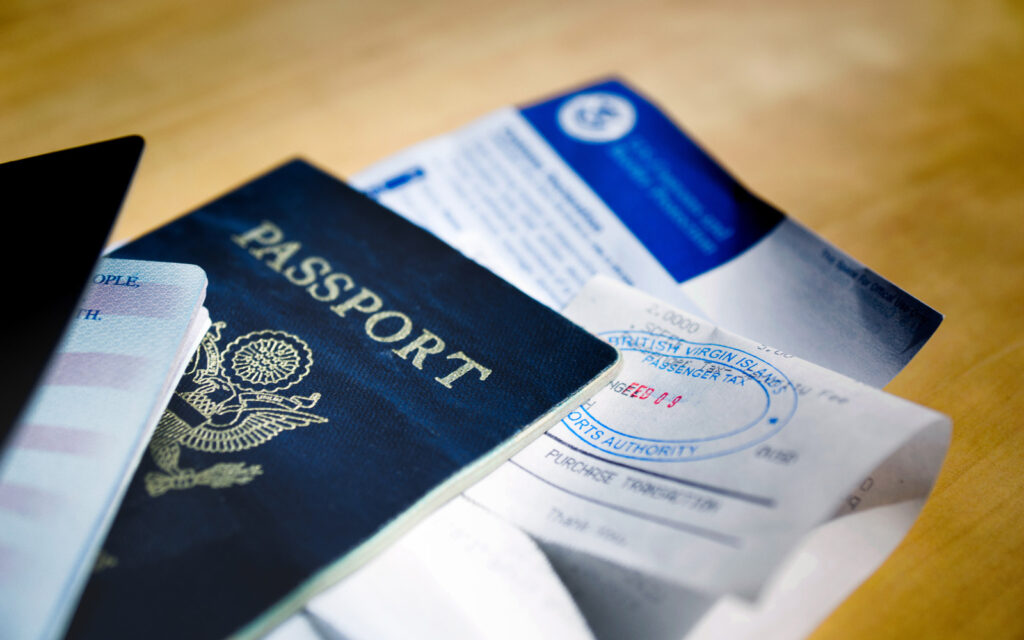
In search of job opportunities, are you relocating? If so, begin networking even before you start packing your belongings and finding out what to pack while traveling abroad. In the new location, study the job market and update your LinkedIn profile and CV. Don’t underestimate the power of online business connections you make; some of them can give you work. Getting a job lined up and waiting would lower the levels of stress and make the process of adaptation much smoother.
Also Read: How To Monitor And Organize Your Job Search
When you are relocating, financial security would be at the top of your priority list. Should you make an estimate of the budget? Sure! Of course! The amount of money you would need depends on many things, such as your ideal lifestyle, the cost of living in the country you are moving abroad to, or whether you are going to live alone or with your family there. Even before you schedule international moving services, start searching for a job and know which relocation questions to ask your prospective employer to avoid making a major dent in your savings.
All of us are hooked to phones, tablets, and other technologyy devices, and we live in an age of technology. You may need to rethink your phone plan when you move internationally. The Global Sysytem for Mobile Communications is used by several providers, so your number will be active in another country. Switch to pay as you go mobile phone plan, and avoid additional high fees, if you want to keep your number. To keep in touch with old friends, you might use your old number, while you get a new one that you can use abroad.
Just how much money you can spend on relocation will be seen in your budget. Are you wondering how to cheaply move internationally? Some tips are to pack light and avoid collecting belongings that you don’t need or use. Put them in storage instead, if you want to preserve a few of your sentimental belongings. You can recycle, throw away or sell anything else. If you want to save up during the move, decluttering your home is imperative.
Also, you should think about finding the best moving company to help you accomplish this mission if you are considering living overseas.

Thorough review will get you a long way. Have you set your sights on a land that you’re going to call home? Go online, join some expat forums, read blogs, watch videos before you fly there. From the point of view of individuals who have already moved, learn about the location. All of them understand how difficult it is to start living somewhere new. Pay heed to the country’s benefits and downfalls. The more you understand, the easier it is to catch on.
You’ve finally arrived and you can start your new life. You now have an opportunity to take part in local happenings and activities. Being overseas offers you the chance to meet other foreigners and make friends from all over the world. Take part in intercultural meetings to become an integral part of the expat community. When you have any trouble fitting in, this tight-knit group will support you.
It’s going to be touch and go for a while, but you’ll adapt.
Related Articles:
How to Travel Within the United States During COVID-19? Postpone your trip until you’ve been fully vaccinated. If you aren’t completely vaccinated and need to travel, follow the CDC’s unvaccinated travel instructions.
Traveling within the United States is safe for anyone who has been fully vaccinated with an FDA-approved vaccination or a World Health Organization-authorized vaccine for emergency use.
As more people become vaccinated, COVID-19 rates change, and more scientific data becomes available, the CDC will update these guidelines. This information is only for travel within the United States and its territories.
Related
Moving During the Covid-19: Dos and Don’ts Comprehensive Guide
Take the following precautions to safeguard others when you travel if you are completely vaccinated.
Wearing a mask over your nose and mouth is required on flights, buses, trains, and other forms of public transportation into, through, or out of the United States, as well as indoors at U.S. transportation hubs such as airports and stations. Passengers are not required to wear masks in the outdoor areas of a conveyance (like a ferry or top deck of a bus).
Wear a mask and keep a safe distance from people to comply with all state and municipal regulations and laws.
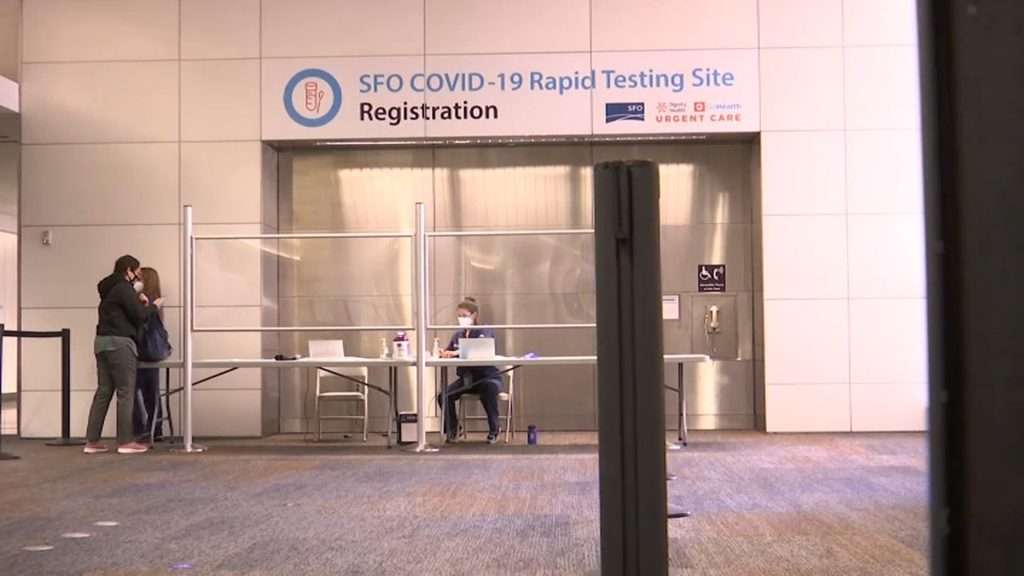
Self-monitor for COVID-19 symptoms; if symptoms appear, isolate yourself and get tested.
Follow any and all state or municipal government recommendations or rules.
You do not need to be tested or self-quarantined if you are completely vaccinated or have recovered from COVID-19 within the last three months. All other travel recommendations should be followed.
Take the precautions below to protect yourself and others from COVID-19 if you are not completely vaccinated and must travel.
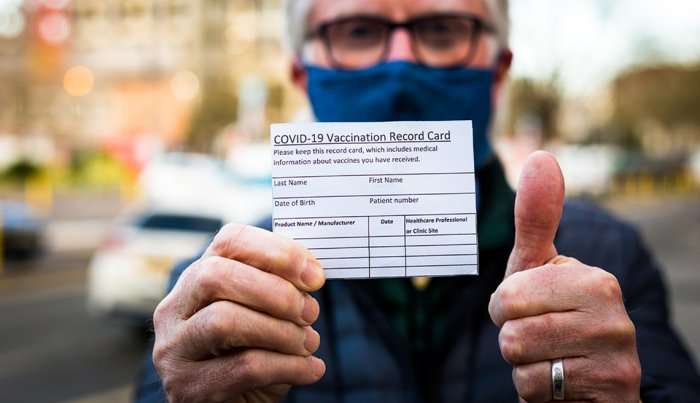
Get a viral test done 1-3 days before your travel.
Wearing a mask over your nose and mouth is required on flights, buses, trains, and other forms of public transportation into, through, or out of the United States, as well as indoors at U.S. transportation hubs such as airports and stations. Passengers are not required to wear masks in the outdoor areas of a conveyance (like on a ferry or the top deck of a bus). According to the CDC, travelers who have not been completely vaccinated should continue to wear a mask and remain at a safe distance when traveling.
Avoid crowds and maintain a 6-foot/2-meter (about 2-arm length) gap between you and anyone who isn’t traveling with you.
Hands should be washed or sanitized on a regular basis (with at least 60 percent alcohol).
Stay at home and self-quarantine for a full week following your vacation, then have a viral test 3-5 days afterward.
Even if you test negative, stay at home and self-quarantine for the full 7 days.
If your test is positive, isolate yourself to avoid spreading the infection to others.
Return home and isolate yourself for 10 days after your vacation if you are not tested.
Whether or not you are tested, keep away from those who are at a higher risk of serious illness for at least 14 days.
Self-monitor for COVID-19 symptoms; if symptoms appear, isolate yourself and get tested.
Follow any and all state or municipal government recommendations or rules.
Visit the website of your state, territorial, tribal, or municipal health department for the most up-to-date information on where to get tested.
Related Articles:

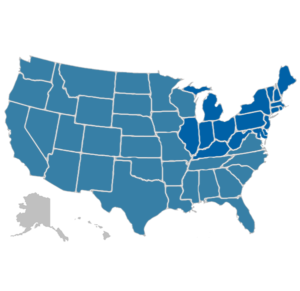




Moving is a significant life event, often marked by excitement and a sense of adventure. Whether you’re moving to a new city for a job, relocating to a larger home to accommodate your growing family, or downsizing to simplify your life, one thing remains constant: the desire to make your move as cost-effective as possible. In the world of relocation, there’s a secret that savvy movers know – there is indeed a more affordable moving season.
This article takes you on a journey to discover the optimal times for a budget-friendly move. Let’s explore how to navigate the complexities of moving season, understand the factors that influence moving costs, and uncover practical tips to ensure your move remains budget-friendly. In a world of AI and automation, remember that the decisions you make are powered by your unique human touch.
Moving season is a concept deeply ingrained in the world of relocation. It refers to the time of year when a significant portion of the population decides to make a move. Understanding this season is crucial because it can directly impact your moving costs and overall experience.
So, when is the best time to move? The most popular moving season typically falls between late spring and early fall. During this period, clear skies and mild weather create ideal conditions for a smooth relocation. But it’s not just the weather that makes this season the preferred choice for many. Schools often have summer breaks, making it convenient for families to relocate without disrupting their children’s education.
While the peak moving season may offer favorable weather and school schedules, it’s not always the most budget-friendly choice. The law of supply and demand comes into play here. When most people want to move, moving companies often charge higher rates, and finding available services can be challenging. It’s during this time that securing moving discounts or deals can be a bit of a challenge.
However, there’s a sweet spot when it comes to budget-friendly moving. This affordable moving season occurs during the off-peak months, typically late fall, winter, and early spring. As the demand for moving services decreases during these periods, moving companies are more likely to offer discounts and lower prices.
Understanding when most people move can help you identify the affordable moving seasons. Most moves occur during the summer months, particularly in June, July, and August. These months are the peak of moving season, characterized by high demand for moving companies and increased prices.
On the flip side, the least popular times for moving are December, January, and February. These months present an opportunity for cost-conscious movers to take advantage of lower moving costs.
Now that we’ve uncovered the affordable moving season, it’s time to dive into practical tips for a budget-friendly move. Here are some cost-effective moving strategies to help you save on moving expenses:
Navigating the more affordable moving season allows you to explore a world of budget-friendly moving options. As you plan your relocation, consider the following aspects:
In the realm of affordable moving, the choices you make, and the strategies you implement are powered by your unique human perspective. The more affordable moving season provides an opportunity to not only save on moving costs but also to embark on a cost-effective relocation adventure.
Moving to a new home is an exciting adventure, but it’s also a significant change. Once you’ve completed the process of relocating and have settled into your new place, there are essential tasks and adjustments to consider to make your transition smoother and more comfortable.
As you explore budget-friendly moving options, remember that the decisions you make reflect your personal preferences, budget, and specific needs. Whether you’re moving for a job, a change of scenery, or to be closer to loved ones, the human touch in your moving journey ensures that it aligns with your individual goals and aspirations.
So, as you plan your next relocation, consider the more affordable moving season as your pathway to a cost-effective and rewarding moving experience. Your journey begins with you, and the choices you make today will shape your moving adventure of tomorrow.
People relocate for a variety of reasons. Divorce, changing marital status, financial or economic reasons such as seeking a more affordable home, and other reasons such as finding a new job in another city or part of town are all examples of reasons. People are always on the move, not just because they want to, but also because they have to. However, people do not travel at the same pace as one would predict.
Fewer people in America moved homes in 2019, shortly before the Coronavirus pandemic struck the country. According to estimates, there was a fall in migration in the months leading up to the coronavirus pandemic. The migration rate had been steadily declining for the previous decade. Before the pandemic, the rate of people changing residence was at an all-time low since World War II between March 2019 and March 2020 last year. Even before the pandemic of the coronavirus.
In terms of migration patterns last year, it appears that there will be a mix of migration patterns across the country and internationally. Real estate, traveling, and survey trends all demonstrate this mixed pattern. All of these data point to a selective migration for various reasons.
The migration patterns indicate a strong decrease in migration movements. There has been a steady but incremental decrease in migration. A variety of factors, including demographics, economic powers, population age, and labor factors, have contributed to this decrease. After the Great Recession of 2008, migration fell even further. Without a doubt, the Great Recession had an effect on the housing and labor markets in general, impacting the pace at which people moved.
Migration, both domestic and foreign, has been on the decline. Internal migration has declined from 4% to about 3.5 percent to 3.7 percent since 2007 (the start of the Great Recession). According to the survey, even those who relocated cited housing-related reasons. Many people relocated in order to find more affordable housing.
The year 2020 will be remembered as the year of the pandemic. People were forced to stay at home and work from home as countries were forced to go into lockdown. The Coronavirus pandemic impacted a wide range of practices, including migration. Despite the coronavirus pandemic, some studies indicate that people continued to move. The moving data from 2019 was compared to the data from 2020. Despite the lack of definitive answers, data on people’s reactions to the pandemic exists. Some data indicates that people moved more than they normally do, while others indicate that they moved less.
The migration trend of 2020 is influenced by a variety of factors such as safety and finances. However, the major factor that influenced moving migration trend in last year was the coronavirus pandemic.
There is evidence that the coronavirus pandemic prompted some of these changes. Some people, for example, migrated from heavily populated areas to smaller towns in order to minimize their risk of catching the virus through interaction with others. For health and safety purposes, some young people were forced to return home with their parents or other family members.

Many businesses and organisations have adapted to the pandemic, and many employees now work from home. This work from home arrangement has influenced migration patterns. According to statistics, a large number of people relocate in order to be closer to their place of employment. They don’t have to go to work every day anymore, which eliminates the need for proximity. Some people have moved away from big cities as a result of this growth, while others have been discouraged from moving to big cities because they can operate from towns close to the cities.
However, there is evidence that some people migrated as a result of the economic downturn. The coronavirus pandemic resulted in significant income loss, and some people were forced to relocate because they could no longer afford their new housing. Some relocated to areas with lower housing costs, while others reconnected with relatives. The majority of those in this group are millennials who struggled to make ends meet due to the pandemic’s effect on their finances and work opportunities. All of them were forced to return to their homes.
Also Read: Tips For Your Long-Distance Move During A Pandemic
The majority of the migration trends in 2020 is linked to pandemics. The duration of the coronavirus pandemic-related migration is unknown. It is predicted, however, that as the vaccine becomes more widely available, the migration rate will resume its steady downward trend. For example, the fact that many companies have embraced the work-from-home arrangement means that less workers can migrate for work. It’s unclear how long the work-from-home arrangement will last, and therefore how long the decline in work-related migration will continue. All other coronavirus-related trends are the same.
Related Articles:
Relocating to a new home can be both exciting and daunting. Amidst the anticipation of a fresh start, the logistics of moving can often pose a challenge. One of the pivotal aspects of a smooth move is obtaining accurate moving quotes. Whether you’re considering long distance movers or local experts, understanding the nuances of moving services is key to a hassle-free experience. In this comprehensive guide brought to you by WowMover, we’ll explore the art of securing precise moving quotes, ensuring your transition to a new chapter is seamless and stress-free.
Moving quotes are estimates provided by moving companies detailing the cost of their services. These quotes encompass various factors such as the distance of the move, the volume of belongings, additional services required, and the intricacies of the relocation process. Obtaining accurate moving quotes is essential as it empowers you to plan your budget effectively, ensuring there are no surprises on moving day.
“Moving quotes are the roadmap to a successful relocation. The more precise the quote, the smoother your move will be.” – Relocation Expert
Gig Harbor, known for its picturesque surroundings, hosts a variety of moving companies. WowMover’s Gig Harbor Moving Company collection allows you to compare free quotes from different movers in the area. This service ensures you have a plethora of options, enabling you to choose a company that aligns with your requirements and budget.
When it comes to moving, research is your best friend. WowMover provides insights into the Two Men and a Truck Cost, a renowned moving service. Understanding the pricing structure of reputable companies aids in making an informed decision. Gathering information about pricing models, additional services, and customer experiences equips you with the knowledge to select the perfect moving partner.
Asking for moving quotes might seem routine, but it holds immense significance. WowMover’s article on Why Is It Very Important to Ask for a Moving Quote? delves into the reasons behind this practice. Accurate quotes prevent misunderstandings, allowing both parties to be on the same page regarding costs and services. A proactive approach to gathering quotes ensures a transparent and smooth moving experience.
For long-distance moves, choosing the right interstate moving company is paramount. WowMover’s collection of the Best Interstate Moving Companies provides a curated list of reliable options. These companies specialize in cross-country relocations, ensuring your belongings are in safe hands during the journey. Detailed moving quote from these companies empower you to make an informed choice, tailored to your specific requirements.
Local moves come with their own set of challenges and requirements. WowMover’s selection of the Top Local Movers highlights companies renowned for their expertise in local relocations. Moving within the same city or neighborhood requires precision and efficiency. These local movers offer competitive quotes, ensuring your move is efficient, timely, and budget-friendly.
Securing accurate moving quotes involves a strategic approach. Here are some tips to ensure the quotes you receive align with your expectations and needs:
“Accurate moving quotes are the foundation of a successful move. By being proactive and thorough in your research, you pave the way for a seamless relocation experience.” – Moving Enthusiast
Navigating the intricacies of moving quotes is a pivotal step in ensuring a successful relocation. WowMover, your trusted partner in the moving industry, simplifies this process by providing access to a plethora of moving services, each accompanied by accurate and competitive quotes. By understanding the dynamics of moving quotes and embracing the tips provided, you embark on your moving journey well-prepared and informed.
“At WowMover, we don’t just offer moving services; we offer peace of mind. Our curated selection of movers and accurate quotes are designed to make your relocation experience smooth, efficient, and stress-free.” – WowMover Team
So, how do you get the most accurate moving quotes? By leveraging the expertise of WowMover, exploring their curated collections, and being proactive in your research. With the right moving partner by your side, your move transforms into an adventure filled with anticipation, excitement, and the promise of a new beginning.